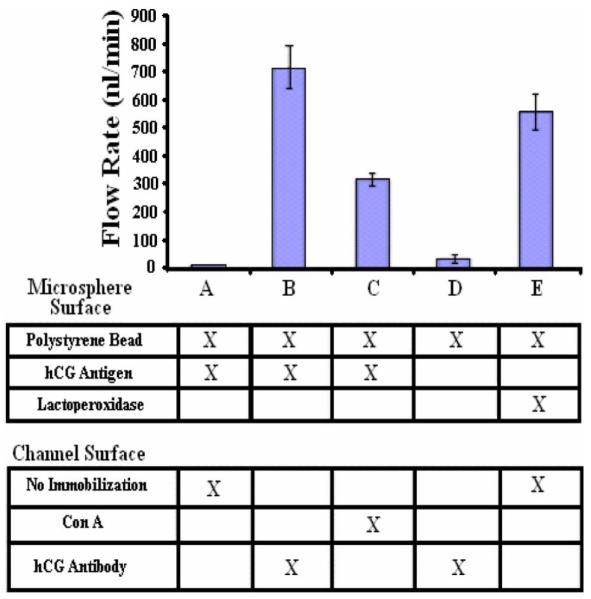Fig. 10.

The relative binding strength measured for a variety of protein–protein interactions. In column A, the result of the control experiment is shown, where a hCG coated bead is tested against an untreated channel. In column B, hCG coated beads are tested against a channel with anti-hCG antibody immobilized on the active area. The high flow rate demonstrates the high affinity resulting from specific antibody-antigen interactions. In column C, antigen-glycoprotein interactions are examined. hCG coated beads are tested against a channel with ConA immobilized on the surface. In column D, another control experiment is performed where a plain latex bead is tested against a surface which has anti-hCG antibody immobilized on it. In column E, another control experiment is performed where beads covered with lactoperoxidase are tested against an untreated channel surface, showing high nonspecific binding.
